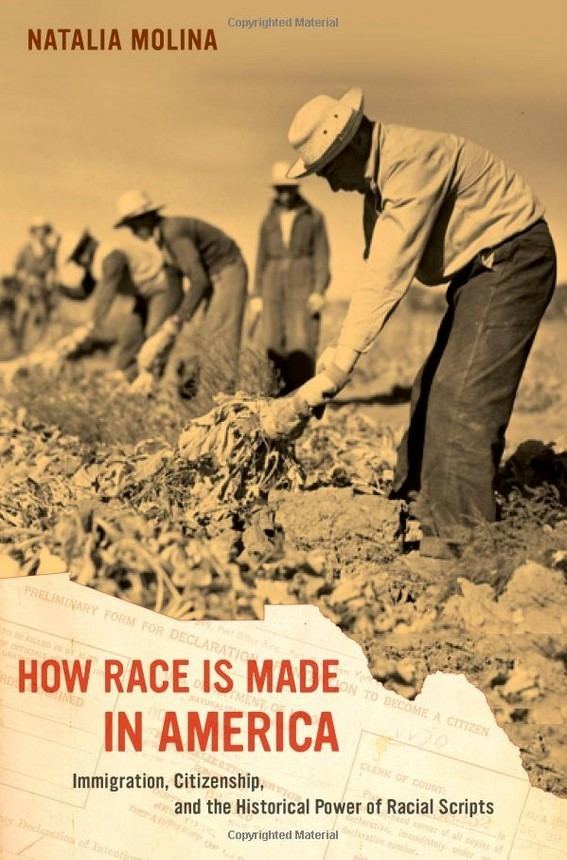Name Natalia Molina | Role Author | |
 | ||
Books How Race Is Made in America: Immigration, Citizenship, and the Historical Power of Racial Scripts, Fit to be citizens? | ||
alma natalia molina
Natalia Molina is Associate Professor in the Department of History and Urban Studies at the University of California, San Diego (UCSD). At UCSD she is also Associate Dean for Faculty Equity in the Division of Arts and Humanities. Molina received her Ph.D. and M.A. from the University of Michigan and her B.A. from the University of California, Los Angeles (UCLA). She is the author of Fit To Be Citizens? Public Health and Race in Los Angeles, 1879-1939 (2006) and How Race Is Made in America: Immigration, Citizenship, and the Historical Power of Racial Scripts (2013). In 2007, Molina was the winner of the PCB-American Historical Association's Norris and Carol Hundley Award for her first book, Fit to be Citizens? Public Health and Race in Los Angeles, 1879–1939.
Contents
Natalia molina llevame lejos
Research
Molina's interests cut across disciplines and examines the intersections of race, gender, culture, and citizenship. Molina's interdisciplinary work on race and medicine has been reviewed positively by scholars in many fields, including history of science, American history, ethnic studies, and sociology. Her scholarship has been described as "an exciting contribution to the growing body of scholarship that knits the history of medicine and public health more tightly into the fabric of the American past..." and as making an “important contribution to the literature on the histories of public health, race, labor, and urban planning by demonstrating the magnitude of public health officials‘ influence on city policy and planning and on the development of racial hierarchies.” Her primary scholarly intervention has been to demonstrate the importance of immigration, medicine and regional history on the construction of race in the United States.
How Race Is Made in America
In her book How Race Is Made in America: Immigration, Citizenship, and the Historical Power of Racial Scripts, published by University of California Press in 2013, Molina examines Mexican immigration to the U.S. Focusing on the years between 1924-1965, Molina argues that during this time period an immigration regime emerged that would define racial categories in the U.S., such as Mexican American, that are still present and largely influential on the perception of race and ethnicity in society today. How Race Is Made in America relies on the use of what Molina terms a relational lens and also aims to show that racial scripts are easily adopted and adapted to apply to different racial groups. By the term relational lens Molina suggests that “a relational treatment recognizes that race is a mutually constitutive process and thus attends to how, when, where, and to what extent groups intersect. It recognizes that there are limits to examining racialized groups in isolation.” Molina's central theory throughout the book, racial scripts, is used “to highlight the way in which the lives of racialized groups are linked across time and space and thereby affect one another, even when they do not directly cross paths,” meaning that "once practices, customs, policies, and laws are directed at one group, they are more readily available and hence easily applied to other groups."
